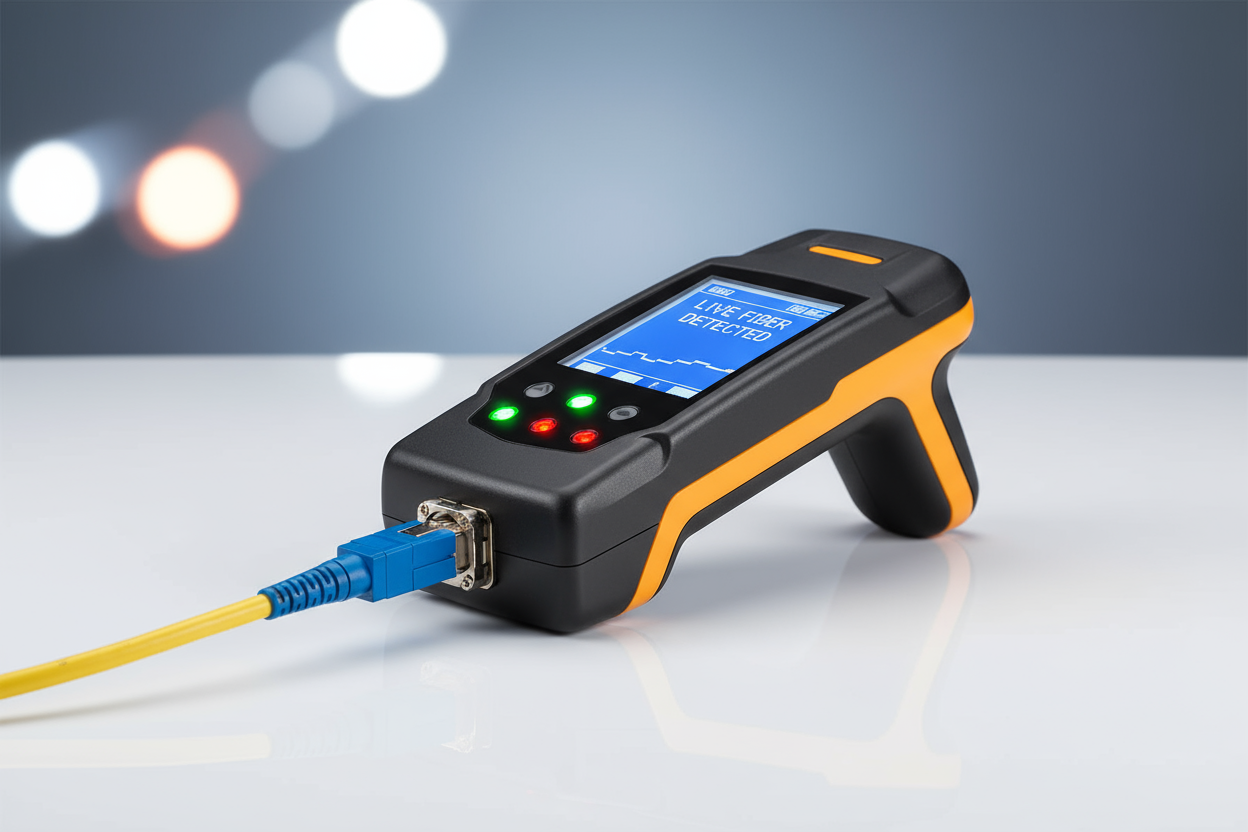
Modular Fiber Testing: Scalability in a Multi-Tool World
As fiber optic networks continue to expand and diversify—from data centers and telecom to enterprise and industrial environments—testing demands have grown more complex. Technicians now face a range of requirements: validating new installations, certifying multi-fiber links, and performing high-speed service activation tests.
To meet these evolving needs, many are turning to Modular Testing Platforms, an adaptable, scalable solution designed for efficiency and versatility.
What Are Modular Testing Platforms?
A Modular Testing Platform is a base unit that allows technicians to swap out different modules or test interfaces depending on the task at hand. Instead of purchasing separate instruments for each type of test, teams can simply plug in the appropriate module—whether for OTDR, Loss Testing, Optical Spectrum Analysis, or Network Certification.
This modular approach consolidates multiple functions into one framework, streamlining both workflow and budget management.
Why Modular Testing Makes Sense
1. Scalability for Growing Teams
As projects expand or new contracts come in, test requirements evolve. A modular system lets you add or upgrade capabilities without buying entirely new equipment. You simply add modules for additional wavelengths, higher bandwidths, or new protocols.
2. Flexibility Across Applications
From fiber characterization to Ethernet service validation, modular test units can be configured for almost any optical or network testing scenario. They’re ideal for teams that handle mixed workloads—telecom one day, enterprise cabling the next.
3. Reduced Equipment Downtime
Instead of sending multiple instruments for calibration or repair, modular platforms let you swap out modules while keeping the mainframe in service. This keeps technicians in the field and reduces operational delays.
4. Cost Efficiency Over Time
While initial investment may be higher than a single-function device, modular systems prove more cost-effective in the long run. Teams can share one platform and add capabilities as needed, minimizing redundant purchases.
Typical Modules in a Fiber Testing Platform
A modular platform can support a wide variety of functions, such as:
-
OTDR Modules – For fault location and fiber length measurement
-
Optical Power Meter & Light Source Modules – For insertion loss testing
-
OSA/OCA Modules – For spectrum and channel analysis in DWDM systems
-
Loss Testers and Fault Locators – For quick field troubleshooting
-
Ethernet & Transport Modules – For validating services up to 400G in modern networks
This versatility makes modular systems especially valuable for contractors and network operators managing diverse projects.
Modular Testing in the Field
For contractors, network integrators, and growing fiber teams, modular platforms simplify operations by:
-
Allowing multiple technicians to use a shared base unit with their own specialized modules
-
Reducing training time with unified interfaces across tests
-
Supporting both fiber optic and network performance testing in one device
-
Making test data easier to manage through centralized software and cloud connectivity
Systems like these are especially useful when teams need to transition between lab-based analysis and field deployment testing.
When to Invest in a Modular Testing Platform
You should consider moving to a modular system if:
-
You manage multiple test types or fiber technologies (single-mode, multimode, DWDM, PON).
-
Your team handles multiple clients or varying service-level agreements.
-
You need scalability for future bandwidth standards (e.g., 10G, 40G, 400G).
-
You want to minimize downtime from equipment overlap or calibration scheduling.
For expanding companies, modular test systems aren’t just about convenience—they’re an investment in operational efficiency and long-term capability.
Shop Modular Fiber Testing Equipment at TT Instruments
At TT Instruments, we supply a wide selection of Modular Testing Platforms and compatible modules for fiber and network testing applications. Our range covers:
-
OTDR, OSA, and Loss Test modules for optical testing
-
Ethernet and transport modules for multi-layer network validation
-
Field-ready mainframes designed for portability and performance
Each unit is professionally tested, calibrated, and supported—ensuring accuracy, flexibility, and scalability for growing teams and contractors.
Explore the Modular Testing Platforms section on our website to discover systems that grow with your business.
Building Smarter Test Systems
As fiber networks expand and evolve, flexibility is key. Modular testing gives engineers and field teams a way to adapt without compromising precision or efficiency. It’s a future-proof approach to managing today’s multi-tool testing environment—scalable, cost-effective, and built for growth.
FAQ
Q1: What is a Modular Testing Platform?
A Modular Testing Platform is a flexible base unit that supports interchangeable modules for different fiber and network tests—such as OTDR, loss testing, optical spectrum analysis, and network certification.
Q2: Why should I choose a modular testing system?
Modular systems are scalable, flexible, reduce equipment downtime, and provide long-term cost efficiency by consolidating multiple test functions in one framework.
Q3: What types of modules are available for fiber testing?
Typical modules include OTDR, optical power meters, light sources, OSA/OCA modules, loss testers, fault locators, and Ethernet/transport validation modules up to 400G.
Q4: Who benefits most from modular testing platforms?
Contractors, network integrators, and growing fiber teams handling diverse projects and multiple clients benefit most from the adaptability and efficiency of modular systems.
Q5: When should a company invest in modular testing equipment?
Invest if your team manages multiple test types, handles varied clients, anticipates future bandwidth growth, or needs to minimize downtime from overlapping instruments.


